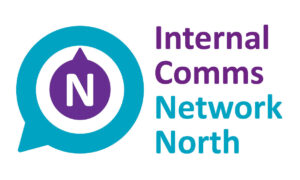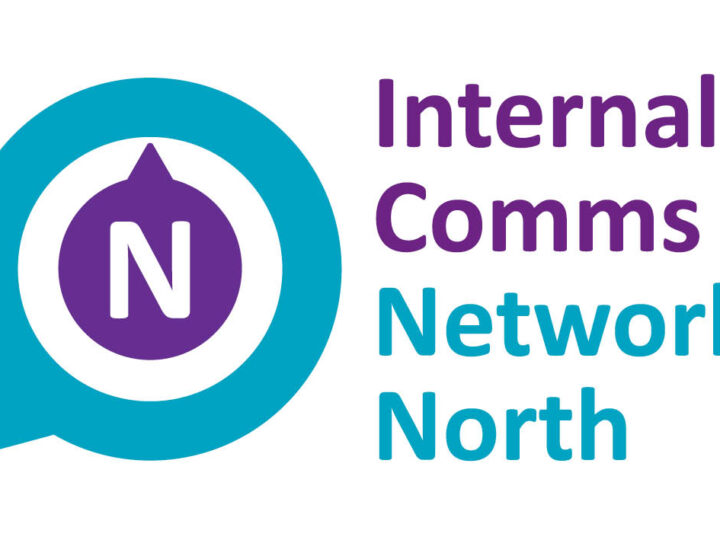After winning Best Internal Communications Campaign at the Chartered Institute of Public Relations’ (CIPR) Yorkshire & Lincolnshire PRide Awards 2018, we identified a gap in the market for high growth SMEs and other organisations in the North of England to better understand and embrace the role of strategic internal communications in the digital age.
We work with high growth clients in sectors like construction, manufacturing, education, and financial services, to help them get to the next level by harnessing the power of internal communications for business transformation and improved organisational performance. Internal comms is usually something that isn’t formalised within SMEs and is either an ‘add-on’ to marketing/HR or sits with the Ops Director as part of the day-to-day running of the business. We want to bring together and support those who are responsible for internal comms in their organisations to share best practice and discover how to make it an integral part of their business growth strategies.

So, we’ve set up the Internal Comms Network North. We’ll be launching the network at a free event in Leeds on 2nd May 2019 where we’ll be discussing the importance of aligning your external and internal brand communications (you can sign up here), but in the meantime, here are five opportunities for SMEs to use strategic internal communications for business transformation:
- See internal communications as something bigger than just communicating internally
The biggest issue internal communications professionals face is not being taken seriously as a key management function which has the potential to transform the business. This means that they are allocated very little budget and end up doing tactical work that has very little impact on organisational performance. As this brilliant article by Australian writer and corporate communications consultant Wayne Aspland points out, the name ‘internal communications’ probably doesn’t do it justice.
In many high growth SMEs, internal comms informally sits with the Operations Director or other top tier management, which is exactly where it should be. However, it is then usually handed over to HR or marketing to execute without it being aligned with the wider business strategy. As the article above points out, communicating the purpose, values, and vision of the organisation on an ongoing basis should be as strategic as creating them was – otherwise the messages will fall on deaf ears.
- Get a fresh perspective
It may seem counter-intuitive to bring in external support for ‘internal’ comms, but it is arguably more important to get a fresh perspective on how you communicate internally than externally. Everyone within the organisation, including those at the very top and those responsible for the internal comms function is an employee and a part of what forms the culture of the organisation. An impartial view is often needed to truly define what it is that makes the organisation unique and how to engage its people in its purpose on an ongoing basis.
- Ask, don’t tell
It may sound obvious but too many internal comms strategies, campaigns, and day-to-day activities are not insight-based. This is usually because internal comms just ‘happens’ and isn’t properly planned or resourced. The biggest barrier to improving organisational performance from the inside out is usually lack of employee engagement and morale – and this comes from a feeling of not being involved or consulted. Even more so than your external marketing communications, your people need to be a key part of what shapes your internal comms strategy and activities as it is ultimately all about them. This must go further than just gathering feedback via anonymous surveys (although this can be a key part of understanding views); it needs to involve in-depth discussions with people from across the business to fully involve them in the creation and execution of the strategy. This is again where a fresh perspective can come in handy – it is very difficult to carry out truly unbiased research when your judgement is clouded by the day to day goings on internally. Taking this insight and looking at the bigger picture of how it relates to the business strategy is key, as is using it to anticipate any potential barriers eg. threatening the ‘old guard’ be changing things too quickly or alienating new talent by ‘doing what you’ve always done’.
It is also important to understand how best to engage people in your workplace through the type, channel, frequency, and format of content, before rolling any internal comms activity out. This will depend on the nature of their roles, the culture of the business, and the personality types within teams. Giving people choice is vital to gaining true engagement.
- Get creative
A lot of time and effort goes into finding creative ways of engaging with external audiences but when it comes to colleagues, there tends to be a ‘broadcasting’ mentality. There is often an assumption that the way to get people to listen in the workplace is to impose it upon them – and because time is tight and productivity is paramount, internal communications is reserved for things that are on a ‘need to know’ basis only. But this is where so many SMEs are missing a trick. We work with businesses with less than 500 staff across only a few sites where people in one area of the organisation have no idea what is happening elsewhere – and don’t even engage with what the brand is communicating to external audiences. This limits their ability to cross-sell, be an ambassador, and perform to their full potential. When it comes to internal comms, simplicity is king – but that doesn’t mean creativity isn’t required. In fact, when your audiences are time poor and the messages you are trying to engage them with are so business critical, a bit of creativity goes a long way. Telling stories with your people at the heart of them rather than broadcasting information can turn a disparate and disengaged workforce into a highly productive and motivated one. This can be as simple as a monthly project spotlight or celebrating a milestone anniversary with a profile on a key team member. Sometimes going the extra mile to share a more in-depth story can save time with reiterating messages in the future as it is more memorable and engaging.
Getting creative with the channels you use (eg whatsapp for those out and about, and posters for those on sites with little access to email) will also help to cut through the noise and make sure the message gets out. Well produced video content that allows senior spokespeople to talk directly to staff across the business without physically being there doesn’t have to cost the earth and can save huge amounts of time and money while being much more personal than a plain text email.
Simply remembering to share creative external marketing content with internal audiences costs nothing but can make a huge difference. Assuming your employees will engage with it because they work for the company isn’t enough – involving them in it, asking for their views, and aligning external and internal comms will mean that everything you do has a greater impact on both employee and customer engagement.
- Measure outcomes, not outputs
Internal comms often doesn’t get the recognition or investment it deserves because senior management view it as an intangible ‘nice to have’ when times are good. In fact, strategic internal comms is more important than ever when there is uncertainty and instability. However, measuring the true business impact can be difficult and needs a long-term approach. Unlike external marketing, internal comms can’t always be measured by business growth; it is often the cost savings, increased productivity, and mitigation of bigger issues where the real impact is seen. Seeing internal comms as a key part of improving overall organisational performance, rather than just a vehicle for disseminating messages, is the only way to see real outcomes.
We believe that by embracing internal communications as a strategic management function, SMEs can get much more from it than larger global organisations who do it because they ‘have to’ due to the sheer number of people and geographical spread of the organisation. At the launch of the new Internal Comms Network North, keynote speaker Colin Middlemiss will be sharing how he created a strategic internal comms function from scratch at healthcare tech company EMIS Group Plc, drawing on his experience from brands like Morrisons and Yorkshire Water, and what the impact on business performance has been. There will also be the opportunity to network and share best practice with other SME leaders and internal comms professionals from larger organisations. We hope to see you there!



